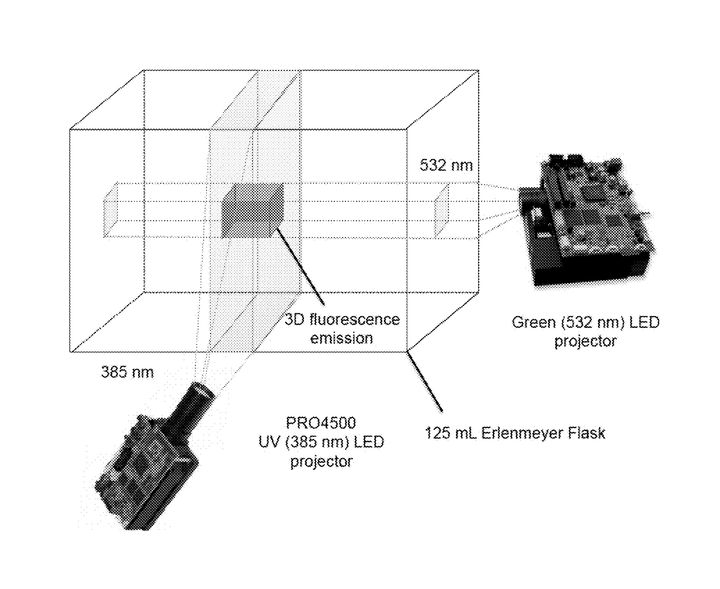
The developments in volumetric 3D printing continue with a new patent being recently granted by the USPTO.
Volumetric 3D printing is an entirely new process that promises to enable near-instantaneous 3D printing in resin. The process involves a reverse CT-scanning approach that solidifies the object in full 3D form simultaneously, rather than the tedious layer-by-layer approach of all other 3D printing processes today.
Patent US10843810 was granted to the Southern Methodist University (SMU) in Dallas a few weeks ago, and was filed on 9 December 2019, over a year ago.
The patent seems quite broad and could cover a wide range of volumetric 3D printing styles. The patent’s abstract explains the process quite well:
”The present invention includes a system, apparatus and method for generating a three-dimensional image and/or printing a three dimensional structures, the system comprising: a medium comprising a photocurable monomer and an optical molecular switch molecule that has a non-fluorescent state and a fluorescent state, wherein the monomer forms a polymer upon exposure to the emitted light. Also taught are novel fluorescent photoswitch molecules.”
As you can see in the diagram above, the concept involves use of a DLP projector to project slices into the resin vat, along with a laser to activate voxels. By spinning the vat one can quickly build up a fully 3D object through solidification of the photopolymer resin.
This technology is to be brought to market by California-based startup Topshelf Enterprises (T3DP), headed by Daniel Clark, who happens to appear as one of the patent owners. Evidently T3DP is licensed to commercialize the technology developed at SMU.
This team apparently owns several other related patents in this area, including one for the “Holovect”, a device capable of displaying a 3D image in space. Here’s a video of it in action:
As you might imagine, the ability to do this is quite similar to that used for volumetric 3D printing where energy must be delivered to specific voxels positions in 3D space. The Holovect system uses reverse CT scanning, as do most volumetric approaches.
It’s my understanding that there are additional volumetric-related patents from this group, and more are apparently about to be granted by the USPTO.
T3DP doesn’t seem to have a proper website that I can find, but other evidence online suggests their goal is to develop a system capable of 3D printing highly advanced and efficient solar cells. However, it seems very clear that patent US10843810 would cover a wide range of volumetric approaches.
xolo Effects
This patent may affect the progress of xolo, a German startup that’s using what seems to be a similar process. Last week they announced the first commercially available volumetric 3D printer.
If there is indeed an overlap in technologies, then it’s possible xolo may have to pay licensing fees to T3DP/SMU. On the other hand, it’s also possible that xolo may have a sufficiently different design in terms of mechanics, wavelengths, chemistry or other aspects. In that case xolo would be free to continue.
As far as I can tell, T3DP does not have a volumetric device available for sale at this point, and xolo appears ahead of T3DP, at least in terms of developing a commercial device. However with their patents and knowledge, it’s likely T3DP will be developing one.
That said, it may be their future device could be dedicated to solar cell production, even though the process is suitable for other forms of 3D printing. We may not see a volumetric 3D printer from T3DP that competes in the general 3D printing market space.
It seems we’re at a pretty early point in the volumetric lifecycle and there are plenty of balls in the air. I’m wondering where they will land.
Via USPTO
